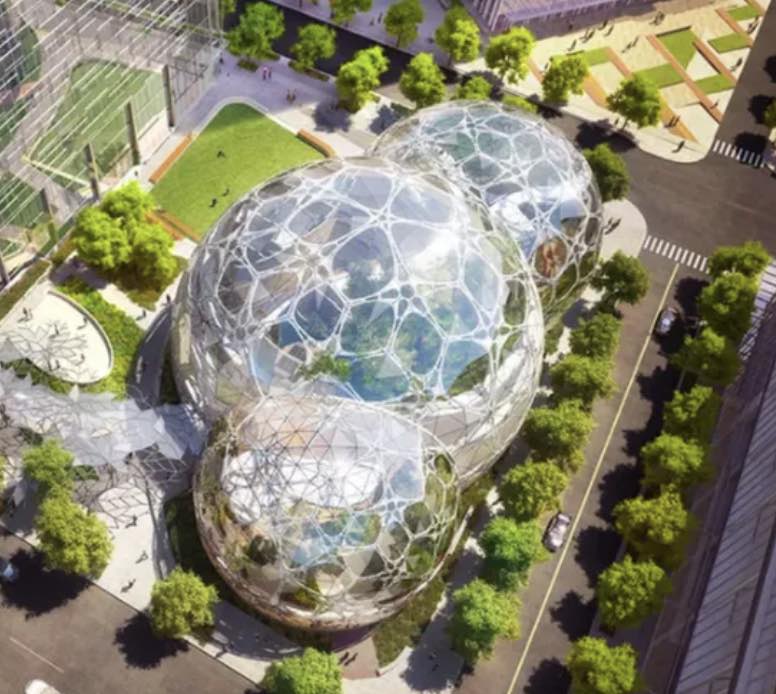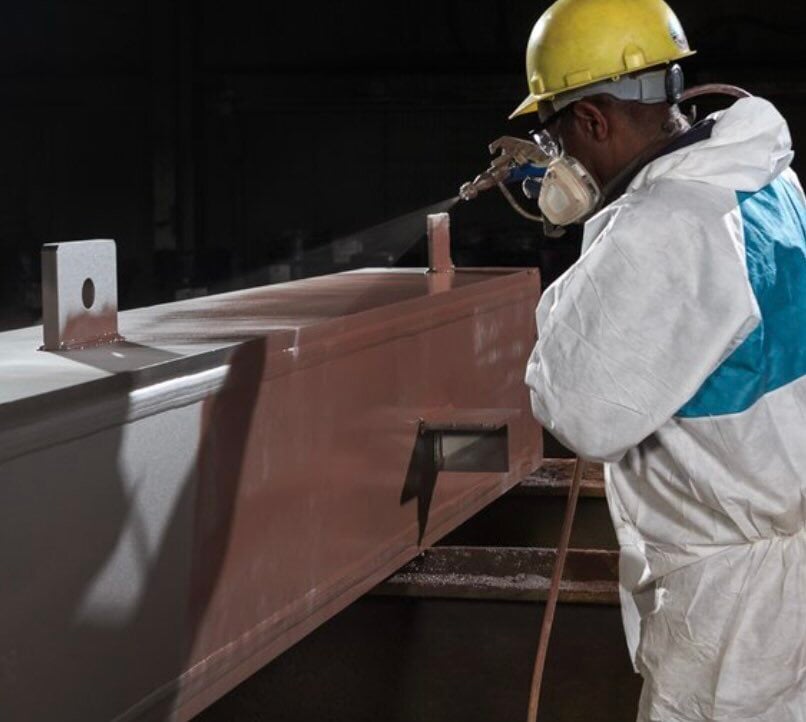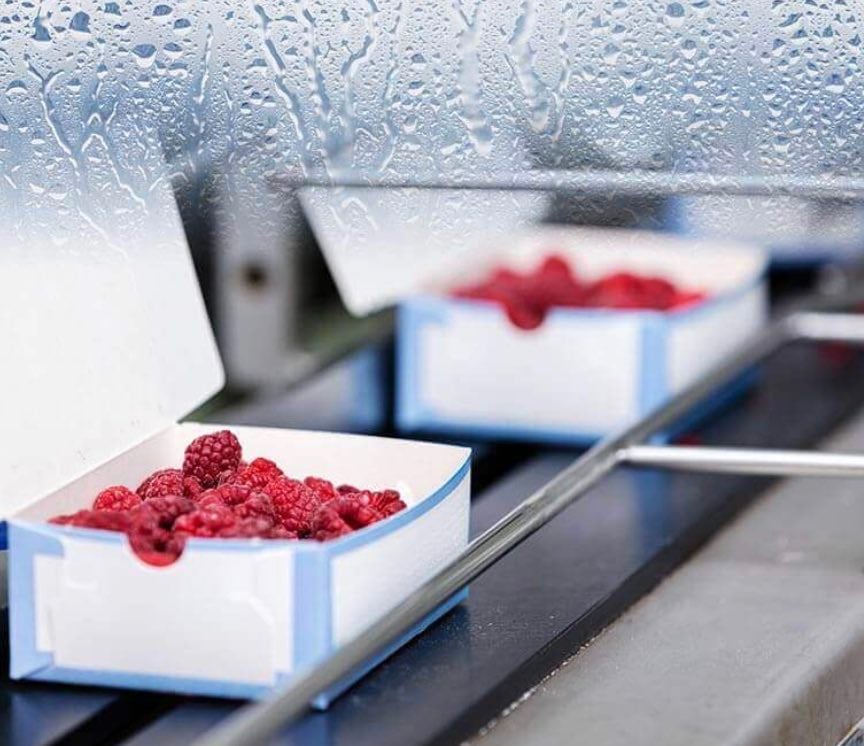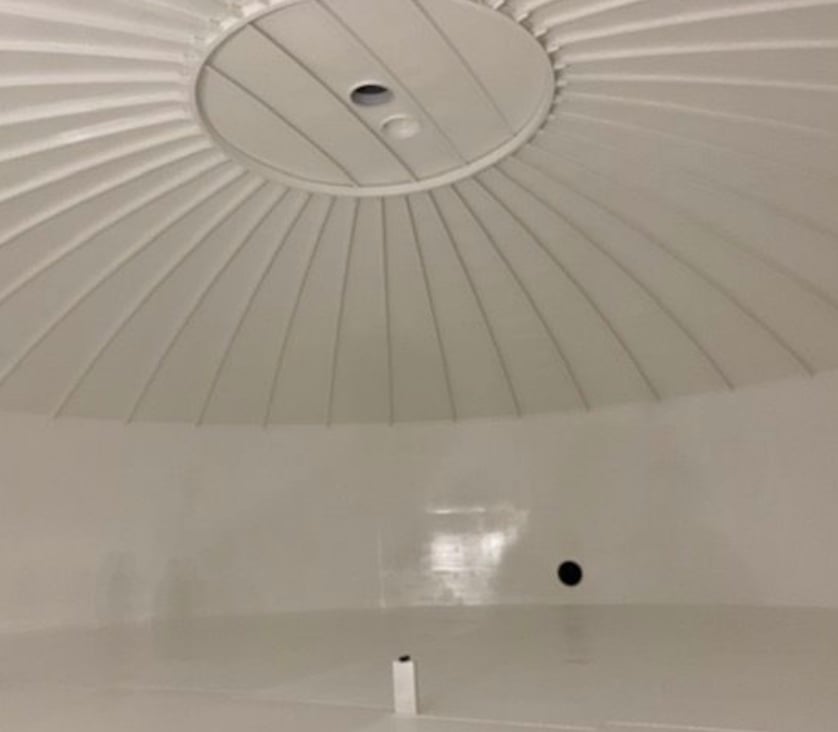
Fluoropolymers or Polyurethanes: Making the Best Choice
Explore the unique properties and applications of fluoropolymers and polyurethanes to determine which material is the best fit for your project needs.
- High Performance Coatings
Here we discuss the difference between fluoropolymers and polyurethanes.
Fluoropolymer or Polyurethane: Making the Best Topcoat Choice
In the world of architectural coatings, the choice of topcoat can make all the difference between a finish that maintains its aesthetic appeal for decades and one that requires frequent maintenance and reapplication. Among the premium options available today, fluoropolymer and polyurethane topcoats stand out as industry leaders, each with distinct properties and performance characteristics. This blog explores the key differences between these two high-performance coating systems, with special attention to Tnemec's Fluoronar — widely recognized as the industry's best air-dried fluoropolymer finish.
Understanding Coating Fundamentals

Before diving into the specifics, it's important to understand that a coating's performance is largely determined by its resin system. The resin serves as the backbone of the coating, providing the foundation for properties such as adhesion, chemical resistance, color retention, and weather resistance.
Polyurethane Topcoats: The Traditional Workhorse
Polyurethane coatings have been the industry standard for decades, offering an excellent combination of properties for architectural applications.
Key Characteristics of Polyurethane Topcoats:
- Durability: Polyurethanes provide good abrasion resistance and flexibility.
- UV Resistance: While better than many conventional coatings, polyurethanes gradually degrade when exposed to sunlight.
- Gloss and Color Retention: Generally good, but will show fading and chalking over time, particularly in severe environments.
- Chemical Resistance: Excellent resistance to a wide range of chemicals.
- Application Properties: Relatively forgiving application parameters with good flow and leveling characteristics.
- Expected Service Life: Typically 10-15 years before recoating becomes necessary.
- Cost-Effectiveness: Lower initial cost compared to fluoropolymers.
Polyurethanes excel in environments where moderate UV exposure is expected and where budget constraints are a primary consideration. They represent an excellent value proposition for projects where the expected service life aligns with renovation cycles of 10-15 years.
Fluoropolymer Topcoats: The Premium Solution
Fluoropolymer coatings represent the next generation of architectural finishes, offering dramatically improved performance in critical areas.
Key Characteristics of Fluoropolymer Topcoats:
- Exceptional Longevity: The carbon-fluorine bond is one of the strongest in organic chemistry, resulting in unmatched chemical stability.
- Superior UV Resistance: The molecular structure resists photodegradation, preventing breakdown from UV exposure.
- Outstanding Color and Gloss Retention: Minimal fading, chalking, or gloss loss even after decades of exposure.
- Chemical Resistance: Exceptional resistance to acids, bases, and airborne pollutants.
- Reduced Dirt Pickup: The non-stick properties inherent to fluoropolymers result in surfaces that stay cleaner longer.
- Expected Service Life: 20-30+ years, often outlasting the building components they protect.
- Long-Term Value: Higher initial cost but lower lifetime cost due to reduced maintenance and recoating requirements.
Fluoropolymer coatings are ideal for high-profile architectural projects, especially those with difficult-to-access surfaces where maintenance costs are significant concerns.
The Tnemec Fluoronar Advantage: Setting the Standard for Air-Dried Fluoropolymers
While several manufacturers offer fluoropolymer coatings, Tnemec's Fluoronar stands apart as the industry's benchmark for air-dried fluoropolymer finishes.
What Makes Fluoronar Exceptional:
- True FEVE Resin Technology: Fluoronar utilizes fluoroethylene vinyl ether (FEVE) resins, which offer the perfect balance of fluoropolymer performance with practical application properties.
- Air-Dried Convenience: Unlike many high-performance fluoropolymers that require oven curing, Fluoronar cures at ambient temperatures, allowing for field application and touch-up.
- Proven Track Record: With decades of real-world installations, Fluoronar has demonstrated its performance capabilities across thousands of projects worldwide.
- Versatile Application Methods: Can be applied by brush, roller, or spray, making it suitable for both shop and field application.
- Custom Color Capabilities: Available in virtually unlimited custom colors, including metallic and mica finishes.
- Comprehensive System Approach: Compatible with various primers and intermediate coats, allowing for customized systems tailored to specific project requirements.
- Technical Support: Backed by Tnemec's industry-leading technical service team, ensuring proper specification and application.
Making the Right Choice: When to Specify Each Coating Type
Choose Polyurethane When:
- Budget constraints are significant
- The expected service life of the structure or renovation cycle is less than 15 years
- Moderate UV exposure is expected
- Aesthetic requirements are important but not critical
Choose Fluoronar When:
- Long-term performance is critical
- The structure has high visibility or architectural significance
- Access for maintenance and recoating is difficult or expensive
- Harsh environmental conditions are present (coastal exposure, industrial environments)
- Life-cycle costs are more important than initial costs
- Color and gloss retention are essential to the design intent
The Economics of Premium Coatings
While the initial cost of fluoropolymer coatings like Tnemec's Fluoronar may be higher than polyurethane alternatives, the long-term economics often favor the premium option. Consider:
- Reduced Recoating Frequency: One application of Fluoronar may outlast two or three cycles of polyurethane coatings.
- Maintenance Costs: Access equipment, surface preparation, and labor costs often dwarf the material cost differences.
- Downtime Considerations: For commercial facilities, minimizing disruptions from maintenance has tangible economic benefits.
- Aesthetic Value: Maintaining the architect's design intent through consistent color and gloss contributes to property value.
Real-World Conversations: What Industry Professionals Are Saying
In discussions with architects, facility managers, and coating contractors, certain themes consistently emerge regarding Tnemec's Fluoronar:
Architect: "We specified Fluoronar for the museum's exterior metal panels fifteen years ago, and it looks virtually the same as the day it was applied. That kind of performance gives us confidence when we're designing signature buildings with expected lifespans measured in decades."
Facility Manager: "The maintenance budget is always under pressure. When I can show that a premium coating like Fluoronar eliminates two repainting cycles over 30 years, the approval for the higher initial investment becomes much easier to secure."
Coating Contractor: "We've applied both polyurethane and fluoropolymer systems, and while they're similar from an application standpoint, the callback rate on Fluoronar projects is practically zero. That matters for our reputation."
Building Owner: "When I look at total ownership costs, the premium for Fluoronar makes financial sense. The building maintains its appearance, which helps with leasing, and we avoid the disruption of frequent repainting."
Conclusion: Matching Performance to Expectations
The choice between fluoropolymer and polyurethane topcoats ultimately comes down to aligning coating performance with project requirements and expectations. While polyurethanes continue to offer excellent value for many applications, the exceptional longevity and aesthetic performance of fluoropolymer coatings like Tnemec's Fluoronar represent the pinnacle of architectural finishing technology.
For projects where appearance, longevity, and life-cycle costs are paramount, fluoropolymer technology—specifically Tnemec's industry-leading Fluoronar—provides unmatched performance that will maintain the architect's vision for decades to come.
LET OUR KNOWLEDGE AND EXPERTISE HELP ENSURE YOUR NEXT PROJECT IS SUCCESSFUL

Unlocking the Power of Zinc Primers in High...
Explore the transformative role of zinc primers...

Effective Methods to Prevent Condensation in Food...
Essential techniques to combat moisture getting...

No Need To Fear NSF-600!
Tnemec Company is well-prepared for the changes...